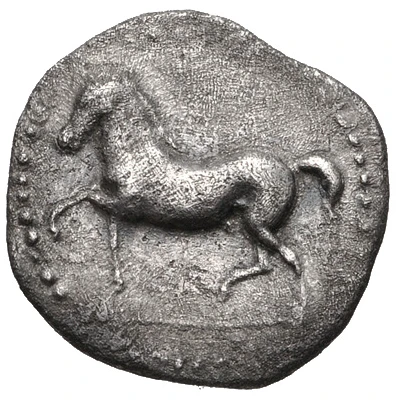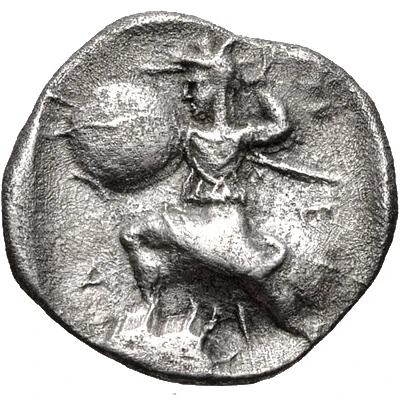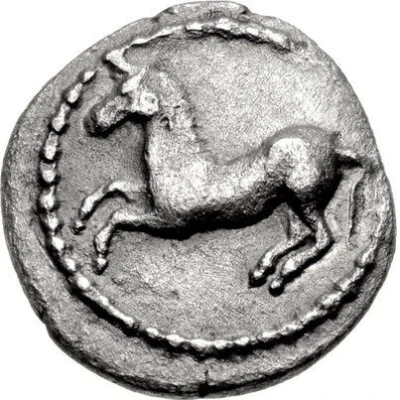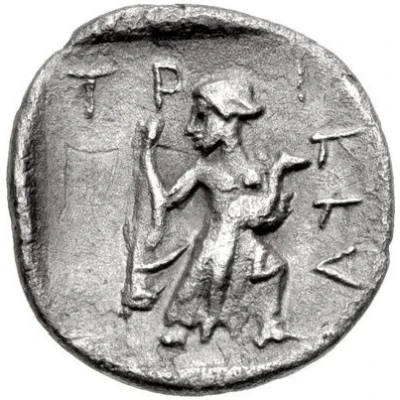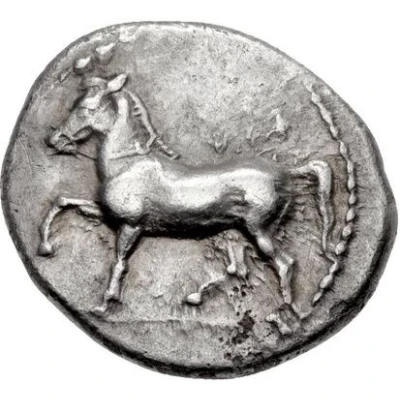
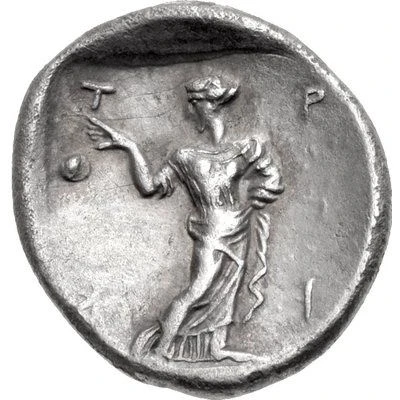

© Classical Numismatic Group, Inc.
Obol 440 BC - 400 BC
| Silver | 0.96 g | 12.0 mm |
| Issuer | Trikka (Thessaly) |
|---|---|
| Type | Standard circulation coin |
| Years | 440 BC - 400 BC |
| Value | Obol (⅙) |
| Currency | Drachm |
| Composition | Silver |
| Weight | 0.96 g |
| Diameter | 12.0 mm |
| Shape | Round (irregular) |
| Technique | Hammered, Incuse |
| Demonetized | Yes |
| Updated | 2024-10-10 |
| Numista | N#145622 |
|---|---|
| Rarity index | 100% |
Reverse
T-P across upper field, I-K (retrograde) from right to left across the lower field, the nymph Trikke standing facing, head facing left and tossing a ball with her right hand. All within incuse square
Interesting fact
The Obol coin was used as a form of currency in ancient Greece, specifically in the region of Thessaly, and was equivalent to one-sixth of a drachma. It was made of silver and weighed approximately 0.96 grams. Despite its small size, the Obol coin played an important role in the economy of ancient Greece, as it was widely used for everyday transactions and was a symbol of the wealth and power of the city-state of Trikka.
